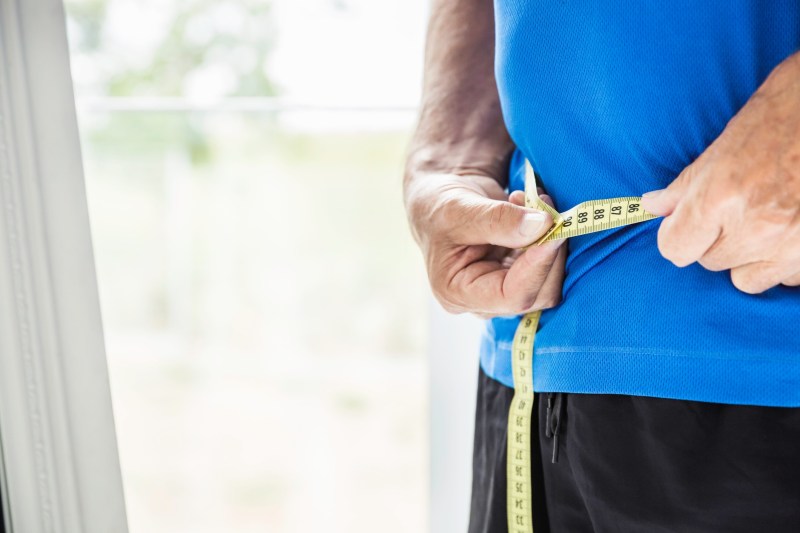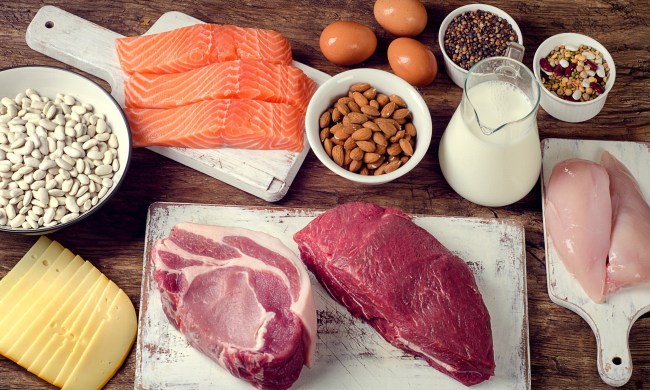Have you heard about the popular 30/30/30 method? With so many workout and diet trends, like the Atlantic diet and so many more, it can be hard to know which you should try and which don’t hold much merit. Luckily, this method is realistic and attainable for many people.
Keep reading to learn exactly how to follow the 30/30/30 method, what the potential benefits and downsides are, and more!
What is the 30/30/30 method?

The 30/30/30 method is a fitness and nutrition strategy designed to optimize muscle growth and fat loss. According to MayoClinic, it involves three key components — “consuming 30 grams of protein within 30 minutes of waking, followed by 30 minutes of low-intensity exercise.”
After an overnight fast, the first step focuses on fueling your body with protein. Consuming 30 grams of protein soon after waking rather than sugar and unhealthy carbs helps kickstart muscle repair and growth while stabilizing blood sugar levels. Next, the method recommends 30 minutes of low-intensity exercise. This could be walking, yoga, or light cycling to promote fat burning and improve overall cardiovascular health.
Combining proper nutrition with gentle movement, the 30/30/30 method sets a solid foundation for achieving fitness goals, particularly for those looking to build lean muscle, boost metabolism, and improve their energy levels throughout the day.
Who is the 30/30/30 method good for?

The 30/30/30 method is particularly effective for those looking to optimize their morning routine in a way that supports their fitness goals. It’s ideal for anyone aiming to build muscle, improve their metabolism, or maintain a healthy weight. This method is especially beneficial for people who struggle with getting enough protein early in the day or want to establish a routine that will give them energy for the day ahead.
If you want to improve your body composition, the combination of protein intake and low-intensity exercise can help support muscle maintenance and fat loss. The 30/30/30 method is also a great choice for individuals who prefer a simple, sustainable approach to fitness that doesn’t require intense workouts or complicated meal plans. It is simply a few small changes, so 30/30/30 is considered suitable for busy professionals, beginners, and even seasoned athletes who want to kickstart their day with a balanced routine.
Does 30/30/30 actually help people see results?

Yes, many people have claimed to see positive results with the 30/30/30 method. This is especially true when paired with a balanced diet and consistent exercise routine. Consuming 30 grams of protein within 30 minutes of waking helps kickstart muscle repair and growth, which is crucial for those looking to build or maintain lean muscle. Protein at breakfast results in “greater initial and sustained feelings of fullness,” helping with appetite control throughout the day.
The 30 minutes of low-intensity exercise that follows supports fat loss and cardiovascular health without overwhelming the body. Low-intensity activities like walking can improve metabolic function and burn calories, contributing to fat loss over time. This type of exercise is sustainable and less likely to cause burnout compared to high-intensity training, making it easier for individuals to stick with long term. It also doesn’t require the gym or any equipment.
If you are consistent with the 30/30/30 method and live a healthy lifestyle overall, you will likely see results.
Are there any downsides to the 30/30/30 method?

While the 30/30/30 method can be effective for many, there are some potential downsides to consider. One issue is that it might not provide enough intensity for individuals with more advanced fitness goals or those seeking challenging workouts. If you only have 30 minutes in the morning to work out in general and are an experienced athlete, the low-intensity exercise portion may not stimulate significant fat loss or muscle growth, so results could be negligible.
Additionally, the method’s focus on consuming 30 grams of protein within 30 minutes of waking may be difficult for some people to achieve, especially those with limited appetite in the morning or dietary restrictions. Not everyone may find it convenient to eat a high-protein meal right after waking up, and missing this window could impact the effectiveness of the method.
Tips for losing weight and building muscle

Focus on strength training
Strength training is the foundation for building muscle. Incorporate compound exercises like squats, deadlifts, and bench presses that target multiple muscle groups. These exercises increase muscle mass, which helps burn more calories even at rest.
Monitor your caloric intake
To lose weight, you need to be in a calorie deficit, which means consuming fewer calories than you burn. However, it’s important not to cut calories too drastically. Aim for a moderate deficit and ensure you’re still consuming enough calories to fuel muscle growth. A slight reduction in calories combined with high-protein meals can support fat loss while preserving muscle.
Get enough sleep
Adequate sleep is crucial for muscle recovery and fat loss. For the average person, seven to nine hours per night is ideal. Poor sleep can hinder muscle repair and increase hunger hormones, making it harder to stick to your nutrition plan.
Stay hydrated
Hydration plays a key role in performance and recovery. Drink plenty of water throughout the day to support muscle function and optimize your workouts. If you are dehydrated, progress with strength and endurance can be impaired, ultimately slowing down your progress.
Frequently asked questions

Who came up with the 30/30/30 method?
The 30/30/30 method was originally promoted by Tim Ferris in one of his most-read books, but Gary Brecka was the one who made it popular on TikTok. The social media platform allowed the tactic to reach a lot more people, inspiring positive change.
What is the 30 30 30 daily routine?
The 30/30/30 daily routine involves consuming 30 grams of protein within 30 minutes of waking up and then engaging in 30 minutes of low-intensity exercise. This method helps boost metabolism, support muscle growth, and promote fat loss. It’s designed so you can start your day on the right foot and optimize blood sugar and energy levels.




